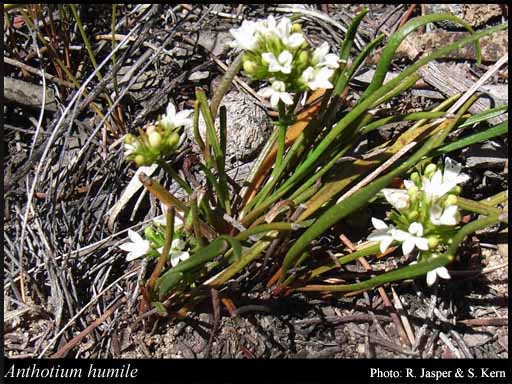- Reference
- Prodr. 582 (1810)
- Conservation Code
- Not threatened
- Naturalised Status
- Native to Western Australia
- Name Status
- Current
Tufted perennial, herb, 0.05-0.2 m high, leaves linear to terete, 0.5-1 mm wide; flowering stems 2-7 cm long. Fl. cream-white/pink/blue-purple, Oct to Dec or Jan to Mar. Sand, sandy clay. Seasonally wet flats, seepage lines.

Scientific Description
Stems ribbed. Leaves compressed or flat, 25-115 mm long, 1-3 mm wide, Indumentum absent (leaves glabrous); margins entire or toothed. Bracteoles absent. Pedicel absent (flowers sessile). Calyx lobes present, Calyx length 3-4 mm long, glabrous. Corolla white, blue or pink, 5-6.3 mm long, auriculate, not spurred, glabrous on the outside, glabrous on the inside; central lobes 2.3-3.4 mm long, with wings; outer lobes 2.5-3 mm long, wingless. Anthers connate. Ovary inferior, not gibbose; style 3-4 mm long, glabrous; indusium single, glabrous; ovules more than two. Flowers in January and December. Occurs in the Jarrah Forest (JF), Mallee (MAL), Warren (WAR) and Esperance Plains (ESP) IBRA Region(s), of the South West (SW) Botanical Province.
Distribution
- IBRA Regions
- Esperance Plains, Jarrah Forest, Mallee, Swan Coastal Plain, Warren.
- IBRA Subregions
- Eastern Mallee, Fitzgerald, Northern Jarrah Forest, Perth, Recherche, Southern Jarrah Forest, Warren, Western Mallee.
- Local Government Areas (LGAs)
- Albany, Augusta Margaret River, Cranbrook, Denmark, Esperance, Gnowangerup, Gosnells, Jerramungup, Kent, Kojonup, Lake Grace, Manjimup, Plantagenet, Ravensthorpe, Wandering, West Arthur.